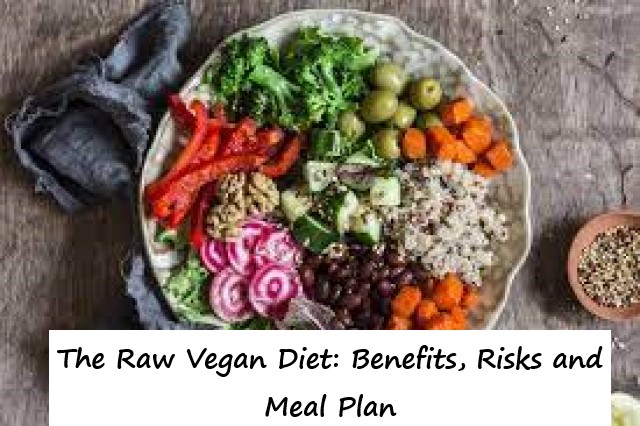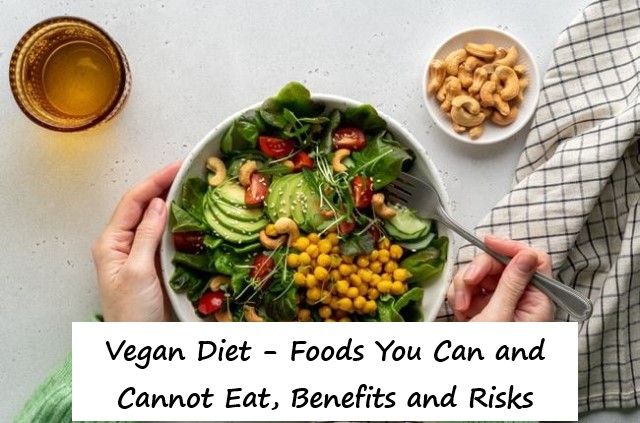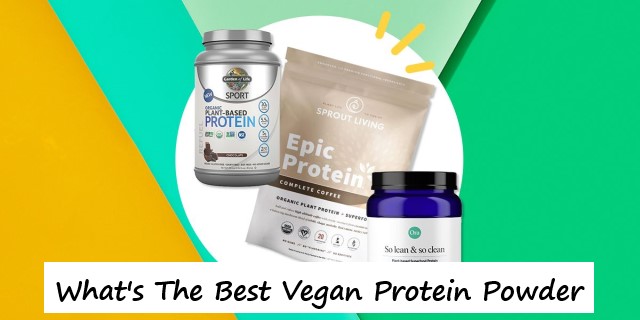
Following the raw vegan diet requires proper preparation to ensure you are still getting the vitamins and minerals your body requires. Adding supplements can help you avoid vitamin B12, vitamin D, or calcium deficiency.
Though the raw vegan diet isn’t new, it has been regaining popularity recently.
It combines the principles of veganism with those of raw foodism.
While some people may choose to follow it for ethical or environmental reasons, most do it for its purported health benefits. These include weight loss, improved heart health and a lower risk of diabetes.
However, a fully raw vegan diet may also pose some health risks — especially when it’s not well planned.
This https://thevegangarden.com/‘s article reviews the raw vegan diet — including its benefits and risks.
What Is a Raw Vegan Diet?
Raw veganism is a subset of veganism.
Like veganism, it excludes all foods of animal origin.
Then it adds the concept or raw foodism, which dictates that foods should be eaten completely raw or heated at temperatures below 104–118°F (40–48°C).
The idea of eating only raw foods has existed since the middle of the nineteenth century when Presbyterian minister and dietary reformer Sylvester Graham promoted it as a way to avoid illness.
A raw vegan diet is generally rich in fruits, vegetables, nuts, seeds, sprouted grains and legumes. It also tends to be naturally low in processed foods.
Those choosing to follow a raw vegan diet are often motivated by health reasons.
They believe that raw and minimally heated foods are more nutritious than cooked ones.
Alternative meal preparation methods, such as juicing, blending, soaking, sprouting and dehydrating, are used instead of cooking.
Some proponents also believe that a raw vegan diet provides all the nutrients humans need — which is why supplements are often discouraged.

Health Benefits
The raw vegan diet is plentiful in nutrient-rich plant foods. It’s also linked to several health benefits.
May Improve Heart Health
A raw vegan diet may improve heart health due to its focus on fruits and vegetables — both of which are consistently linked to lower blood pressures and a reduced risk of heart disease and stroke.
This way of eating also includes plenty of nuts, seeds, sprouted whole grains and legumes. Studies show that these foods may improve blood cholesterol levels and further lower your risk of heart disease.
Observational studies report that vegans may have up to a 75% lower risk of developing high blood pressure and a 42% lower risk of dying from heart disease.
What’s more, several randomized controlled studies — the gold standard in scientific research — observe that vegan diets are particularly effective at reducing “bad” LDL cholesterol.
Few studies have looked at the effect of raw vegan diets specifically. Yet, their high content of nutrient-rich plant foods may offer similar results — though more studies are needed.
May Reduce Your Risk of Diabetes
A raw vegan diet may also reduce your risk of diabetes.
Again, this may partly be due to its focus on fruits and vegetables, which are linked to a lower risk of type 2 diabetes. Additionally, this diet is rich in fiber — a nutrient linked to lower blood sugar levels and increased insulin sensitivity.
One recent review study linked vegetarian and vegan diets to a 12% lower risk of type 2 diabetes, with vegan diets being the most effective.
What’s more, vegan diets contain good amounts of nuts, seeds, sprouted grains and legumes, which may further help lower blood sugar levels.
That said, few studies have looked at the direct effects of raw vegan diets.
However, since they’re likely to include as much — if not more — nutrient- and fiber-rich fruits and vegetables compared to other types of vegan diets, similar benefits may be expected.
May Aid Weight Loss
A raw vegan diet seems very effective at helping people lose weight and keep it off.
In fact, studies consistently link raw food diets — including raw veganism — to lower amounts of body fat.
In one study, people following various raw diets for over 3.5 years lost around 22–26 pounds (10–12 kg). What’s more, the participants with the highest percentage of raw foods in their diet also had the lowest body mass indexes (BMIs).
In another study, people following a raw vegan diet had a total body fat percentage between 7–9.4% lower than those eating a typical American diet.
Moreover, several high-quality studies report that low-fat vegan diets — including raw vegan diets — are particularly effective for weight loss.
May Improve Digestion
The high amount of fiber in whole plant foods may help improve your digestion.
Raw vegan diets are high in both soluble and insoluble fibers.
Insoluble fibers add bulk to your stools and help food move more quickly through your gut, reducing the likelihood of constipation.
Soluble fiber is also beneficial, as it helps feed the good bacteria in your intestines.
In turn, these healthy bacteria produce nutrients, such as short-chain fats, which help reduce inflammation in your gut. They may also improve symptoms of irritable bowel syndrome (IBS), Crohn’s disease and ulcerative colitis.
Potential Risks
A raw vegan diet may also come with some risks — especially if you don’t plan it well.
May Be Nutritionally Unbalanced
Vegan diets can be appropriate for all life stages — as long as they’re well planned.
One of the prerequisites to a well-planned vegan diet is to ensure it provides all the vitamins and minerals your body needs. You can do so by consuming either fortified foods or supplements to compensate for the nutrients it is naturally low in.
Vitamin B12 is one example of a nutrient naturally lacking in a raw vegan diet. Getting too little of this vitamin can lead to anemia, nervous system damage, infertility, heart disease and poor bone health.
While anyone can have low vitamin B12 levels, vegans not taking supplements are at a higher risk of deficiency.
In fact, one study found that 100% of participants following a raw vegan diet consumed less than the recommended 2.4 mcg of vitamin B12 per day. Moreover, more than a third of the participants were vitamin B12 deficient at the time of the study.
However, the use of supplements is often discouraged on a raw vegan diet, due to the belief that you can get all the nutrients you need from raw foods alone. This can increase your risk of nutrient deficiencies.
Raw vegan diets also appear to be low in calcium and vitamin D, and proponents often discourage the use of iodized salt, which may further put you at risk of deficiency.
May Weaken Muscles and Bones
Several aspects of a raw vegan diet may result in weaker muscles and bones.
For starters, this way of eating tends to be low in calcium and vitamin D — two nutrients needed for strong bones.
In one study, people on a raw vegan diet had lower bone mineral content and density than those following a standard American diet.
Some raw vegan foodists may be able to get enough vitamin D from sun exposure.
However, older adults, people living in northern latitudes or those with darker skin may be unable to consistently produce enough vitamin D from sun exposure alone.
What’s more, a raw vegan diet tends to provide very little protein — often less than 10% of your total number of calories per day.
Though such low protein levels may theoretically be sufficient to meet basic biological needs, some evidence links higher intakes to stronger bones.
Protein is also important for preserving muscle mass, especially during periods of low calorie intake that lead to weight loss — such as can be expected on this diet.
May Promote Tooth Decay
Raw vegan diets may also increase your likelihood of tooth decay.
This may be especially true of diets which include a lot of citrus fruits and berries.
These fruits are thought to be more acidic and more likely to cause erosion of your tooth enamel.
In one study, 97.7% of people on a raw vegan diet experienced tooth erosion to some degree, compared to only 86.8% in the control group.
However, more studies are needed before strong conclusions can be drawn.
May Reduce Fertility
In some cases, a raw vegan diet may reduce fertility.
In one study, 70% of women following a raw vegan diet experienced irregularities in their menstrual cycle. What’s more, about a third developed amenorrhea — a condition in which women stop menstruating entirely.
Additionally, it was observed that the higher the proportion of raw foods, the stronger the effects. The researchers calculated that the women eating only raw foods were seven times more likely to experience amenorrhea than other women.
Scientists note that one of the main ways a raw vegan diet may impact a woman’s fertility is by being very low in calories. This may cause women to drop too much weight, reducing their ability to menstruate.
How to Follow a Raw Vegan Diet
To follow a raw vegan diet, you should first ensure that at least 75% of all the food you eat is raw or cooked at temperatures below 104–118°F (40–48°C).
Animal products should be avoided entirely, while fruits, vegetables, nuts and seeds should be plentiful. Grains and legumes can be included but must be soaked or sprouted prior to consumption.
Foods to Eat
- Fresh, dried, juiced or dehydrated fruits
- Raw, juiced or dehydrated vegetables
- Raw nuts and seeds
- Uncooked grains and legumes (sprouted or soaked)
- Raw nut milks
- Raw nut butters
- Cold-pressed oils
- Fermented foods like miso, kimchi and sauerkraut
- Seaweed
- Some sweeteners, such as pure maple syrup and unprocessed raw cacao powder
- Condiments, including vinegars and unpasteurized raw soy sauce
Foods to Avoid
- Cooked fruits, vegetables, grains and legumes
- Baked goods
- Roasted nuts and seeds
- Refined oils
- Salt
- Refined sugars and flours
- Pasteurized juices
- Coffee and tea
- Alcohol
- Processed foods and snacks, such as chips and pastries
Sample Menu
The following sample menu can give you an idea of what a few days on a raw vegan diet might look like.
Day 1
- Breakfast: Tropical green spirulina smoothie
- Lunch: Raw pea, mint and avocado soup
- Dinner: Raw vegan pizza
Day 2
- Breakfast: Chia seed pudding topped with berries
- Lunch: Raw nori wraps with a spicy dipping sauce
- Dinner: Raw pad thai
Day 3
- Breakfast: Raw banana pancakes with almond butter
- Lunch: Raw spiralized zucchini topped with a basil pesto sauce
- Dinner: Raw lasagna with marinated veggies, sun-dried tomatoes and a cashew-cilantro sauce
Snacks
- Pecan energy balls
- Raw vegan granola bar crackers
- Dehydrated fruit
- Chia pudding
- Fruit smoothies
- No-bake chocolate chip cookies
- Veggie salad with guacamole dressing




